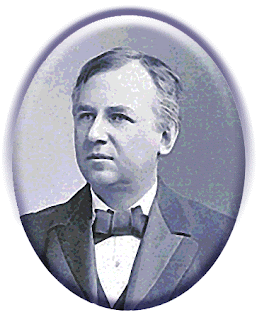One of the conditions that made me who I am today is that as a child, I had very simple playthings. I didn't grow up with toys that were computerized and in fact I didn't have many toys that were mechanical. And so I had the great advantage in life of having to use my imagination. I treasured what toys I had, safeguarded them, and still have quite a few of them with me today. Many of them are classics. The toy above is sold as Charles Eames' House of Cards, and it's the same set I used to construct buildings more than 50 years ago.
Charles Eames was trained as an architect, but he was really a renaissance man. He was responsible for popularizing molded plywood furniture, and in particular for the Eames Chair, which became the status symbol of many a CEO. If you've ever been to an event where chairs have been unstacked, it's likely that their design originated with Charles Eames.
Though he had a thriving livelihood manufacturing chairs, Charles Eames (and his talented wife and partner, Ray) moved in many arenas. He produced films and animations, and he was a master of conveying extremely complex ideas very simply and elegantly.
When I was in college, I had the great opportunity to go to a lecture by Charles Eames. I remember on that particular evening I had another commitment, and I agonized over which to attend. I'm so thankful I made the right decision.
Eames spent the evening sharing his films and slide shows, and talking about them. To fully appreciate that, one has to know that Eames developed the multimedia presentation. He was a master of making multiple slide presentations or movie projections move in sync, and each individual spotlight of movement would be exquisitely beautiful. It's not surprising, therefore, that President Eisenhower asked Eames to produce the very first cultural exchange between the United States and the Soviet Union. Eames made a multimedia presentation about an average day in the life of America, and it was projected inside a geodesic dome constructed by Buckminster Fuller. The evening I heard him, Eames showed that same presentation and talked about it, and it was very powerful.
 |
| Glimpses of the U.S.A., Moscow, 1959 | The Work of Charles and Ray Eames | A. Abrams | 1997 |
His idea was to show, in multiple projections, ordinary aspects of one American day as it happened all across the country. So imagine sitting in the audience and seeing, simultaneously, the sun rising above New England, above cities, wheat fields, national landmarks — the sun rising above about a dozen disparate places that are all quintessentially American and breathtakingly beautiful. Then imagine just a split-second later seeing breakfast being prepared and served across the country, and it, too, is a simultaneous profusion of images that are beautiful and stunning. Stunning! And all twenty-two hundred images projected in a rhythm that's like a great dance across the screens. What I remember of the evening is that everyone in the audience (it was a packed concert hall) gasped in unison, and gasped again and again. Charles Eames had such a talent for presenting beauty that it literally took the breathe away.
The very end of the film showed forget-me-nots in every conceivable way — clutched in hands, in rock crystal vases, in rock gardens... When the lights came on, Eames recounted that he had not known it, but the meaning of the forget-me-not is the very same in Russian. Russian audiences cried as they watched the multimedia event, and I'm sure it had meaning to them on many levels. The sheer beauty of his work was such that I still feel an emotional tug just recounting that evening and what an impact Eames has had on me.
For anyone reading this who is a student, I will share one thing that Eames said that evening that has always stayed with me and resonated. He said that he believed anyone in the process of attaining a master's degree or doctorate should receive it only after they could successfully explain their thesis to a second grader.
Ray and Charles Eames went on to become designers of exhibitions, all the while building handsome furniture and making movies.
I go back now and look at the individual cards of the Eames toy, and I appreciate how in such simple images Mr. Eames imparted rich color, beauty in the everyday, beauty in order, the charm of things grouped, and all those things that would lead one to become a designer and a designer of one's life. He's still an inspiration.
Monday's posting will be a look at Charles Eames' office.

















































